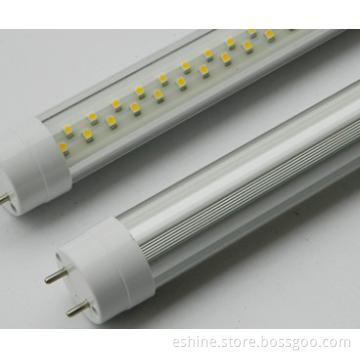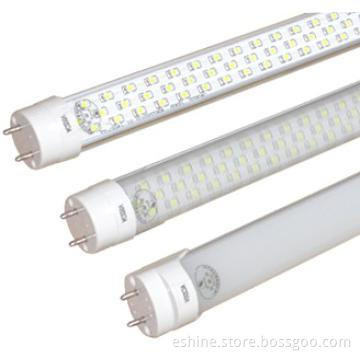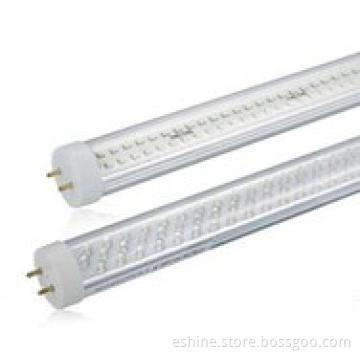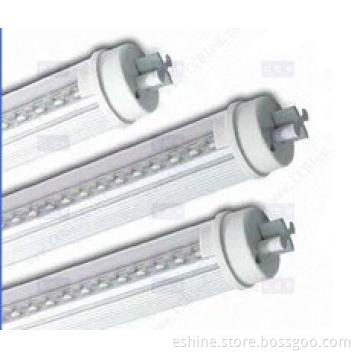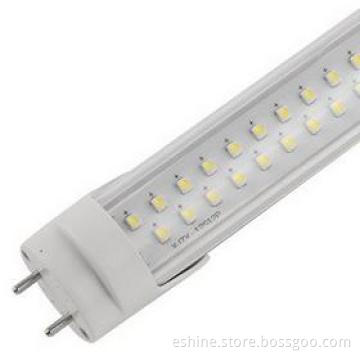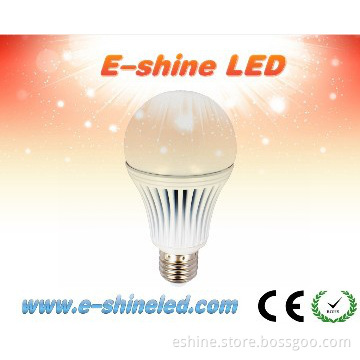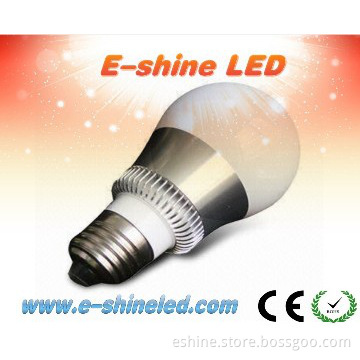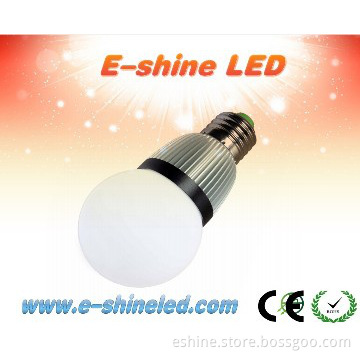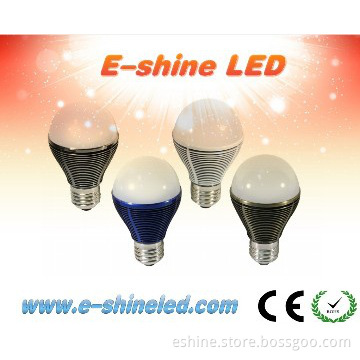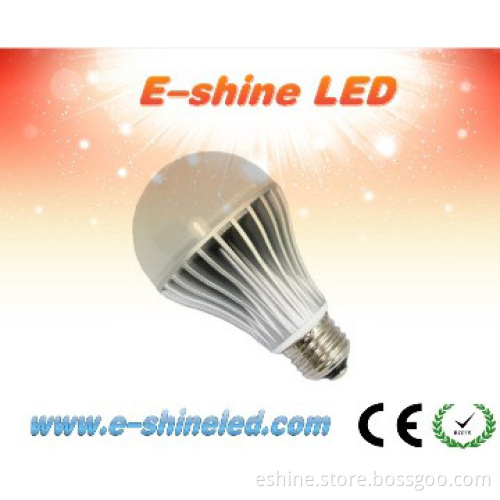
E-shine LED Bulb Lights Epistar CREE SAMSUNG LOT
Your message must be between 20 to 2000 characters
Contact NowBasic Specification
| Cert | CE Rohs FCC |
|---|---|
| Lifespan | 50000Hrs |
| Emitting Color | WW / NW / DW / CW |
| Product Model | E-shine LED Bulb Lights |
| Life | 50,000 Hours |
| Power | 3W 5W 7W 9W 12W 15W 18W 20W 25W |
| Color Tones | Warm Color |
| Lamp Holder | B22, E27, GU10 |
| Light Source Chip | Epistar |
| Voltage | 90-260V |
| Illuminant | LEDs |
| Dimmable | No |
| Package | Yes |
| Power Storage or Not | No |
| Material | Aluminum, Glass, PC |
| Lamp Base | B22, E27, GU10 |
| Shape | Global Shape |
Detail Description
Tech of E-shine LED Bulb Lights:
- Few products are more associated with China than LED lighting. Every week we receive several inquiries for LED bulb lights, so we thought it was about time to share some of our experiences regarding this product. In this article we explain important technical specifications, where you find decent LED lighting manufacturers and what American and European importers need to know about product certification compliance.
- Importing LED bulb lights from China requires a certain level of technical expertise. There’s no universal quality standard or regulation that states how an LED bulb light shall be constructed. Instead, Chinese manufacturers are accustomed to produce products according to the buyer’s product specifications. This is also where the problems begin. Many importers make the false assumption that Chinese manufacturers know which quality standard that is expected by buyers in your market.
- This is not the case. In order to understand the dynamics of Chinese manufacturing, I suggest that you imagine your supplier as a “toolbox” of sorts. They provide the labor, production lines and manufacturing expertise (to a varying degree). Yet, it’s your job to tell the supplier what you want them to make. What does a product specification for an LED light bulb look like? Well, that depends on your requirements (there are LED bulb lights of varying quality on every market), but it might look something like this:
- Lamp Luminous Flux (lm): 560
- Color Temperature (CCT): Cool White
- Lamp Body Material: Aluminum
- LED Chip: Epistar (Taiwan)
- Input Voltage: AC85-265V
- Lamp Luminous Efficiency: 80 lm/w
- Working Temperature: -20 – 50 ℃
- CRI: 80%
- Dimension(cm): D6*H13.8cm
- Net Weight: 120g
- CRI (Ra>): 80
- Working Lifetime: 50,000 hours
- Base Type: E14
- Work Frequency: 50-60Hz
- CCT: 2700-6500k
- Certification: CE, RoHS
I’m not going to explain each and every one of the product specifications, listed above. However, some are more important than others and therefore deserve a bit of extra attention.
LED Chip
The LED chip is the core component in the bulb light. There are various brands in usage. While some suppliers allow the customer to choose between a range of manufacturers, most are exclusively using Epistar (Taiwan) for their export produce. Other famous LED manufacturers are Cree (USA), Osram (Germany) and LG (South Korea).
LED chips vary in price and quality. While Epistar is good enough for most consumer applications, other brands such as Osram and Cree offers a higher brightness and longer life span.
Working Lifetime & Warranty
Most LED bulb lights have a working lifetime of 50,000 hours. That translates into roughly a decade of daily usage. Some suppliers also claim to offer a warranty. While this is a good sign, there’s no international definition of what a warranty is. In general, this warranty is not much more than a vague promise of a future replacement of defective units. However, requesting compensation from a Chinese supplier is anything but easy:
1.) Assuming an LED bulb light stop working within the warranty time, your supplier will request proof that the product was not misused. Producing such proof might request you to investigate every single defective unit. It’s neither practical nor economically viable for any small business. The Chinese manufacturers are of course perfectly aware of this.
2.) Most suppliers requests the buyer to return the defective units to China. This is problematic for two reasons. Firstly, it’s not practical to return products to China. The Chinese Customs might not even allow the product to re-enter. Secondly, you’ll have to put out the money until the supplier has decided whether to compensate you or not. Assuming they would decide not to compensate you (which is very likely when involving Chinese suppliers), you’ll end up losing even more money since you paid for return freight.
Most Chinese suppliers consider the warranty a matter of negotiation. I advise you to not place too much weight on the claimed warranty time when selecting a supplier.
Input Voltage & Frequency
Different countries have different standards for electricity distribution. While most Chinese manufacturers can deliver products that are compatible with the voltage and frequency of any country, you should specify in which you plan to sell your product. Below is a list of countries / markets and their respective electrical standard:
- United States: 120 V, 60 Hz
- European Union: 230 V, 50 Hz
- Canada: 120 V, 60 Hz
- Australia: 230 V, 50 Hz
- New Zealand: 230 V, 50 Hz
- Nigeria: 240 V, 50 Hz
- Russia: 220 V, 50 Hz
- Japan: 100 V, 50 & 60 Hz
Base Type
Most LED bulb lights are made with standard light bulb base connections (i.e. the Edison screw base).
LED lighting manufacturers and wholesalers in China
China is by far the world’s largest exporter of LED bulb lights. With more than 4300 suppliers listed on Alibaba.com, finding the right LED lighting manufacturer in China can be a challenge to say the least. While suppliers of related products, such as, are highly concentrated in one specific city or region (i.e.), LED bulb light manufacturers are spread out all over the Chinese east coast.
However, more than 85% of the companies registered in China as LED bulb light manufacturers are based in the southern province of Guangdong, and Zhejiang in the east. If you plan to fly over and visit a few manufacturers on your own, these are the cities you should go to:
Shenzhen, Guangdong Province
Guangzhou, Guangdong Province
Zhongshan, Guangdong Province
Ningbo, Zhejiang Province
Hangzhou, Zhejiang Province
Manufacturing electronics (without running up the defect rate) require a certain degree of sophistication from the supplier. In a perfect world, you would be able to take this for granted when buying from China. As you might have guessed, it’s not the case. There’s a lot of variation between LED lighting manufacturers, both in terms of product quality and management reliability. Below I list the most important factors when selecting a supplier:
Registered Capital
The registered capital is not equal to the amount of money the supplier got in their bank account. However, it’s a very good indication of the suppliers’ size – and size matters when selecting a Chinese manufacturer. Things do go wrong in the production from time to time. When this happens, you’re better off with a supplier that has the resources to compensate you. While negotiating compensation with Chinese suppliers is never easy, it’s a dead end to do so with those suppliers that doesn’t even have enough cash (or access to credit) to purchase new components and restart production. This is often the case with the smaller manufacturers and traders.
So, what should be considered an adequate amount of registered capital when selecting an LED bulb light supplier? I’d draw the line at RMB 5,000,000, based on the assumption that the supplier can prove compliance with the product certification requirements in your country.
Quality Manage System
Manufacturing is not a science. It’s not a matter of if, but how many units (as a percentage of the total order) will be defective. The supplier’s responsibility is to continuously monitor the product quality, from incoming components and materials to assembly and packing. There are already international standards in place that regulate quality management, the most common being ISO9001.
Additional Information
| Payment Terms | L/C, T/T, Western Union, Paypal |
|---|---|
| Minimum Order | 500 |
| Lead Time / Delivery Time | 12 Day(s) |
| Sample Available | YES |
| Delivery Details | 1. Payment term: 100% T/T for samples; For bulks 30-50% deposit before producing, 50-70% balance before shipping. 2. Delivery time: 3-5working days for samples, 10-15working days for bulks. |
| FOB Port | Shenzhen |
| Loading Info | Delivery time: 3-5working days for samples, 10-15working days for bulks. |
| Packing Info | 100PCS / CTN |
| Target Market(s) | North America, Oceania, Southeast Asia, Eastern Europe, Africa(except Middle East), Hong Kong/ Macao/ Taiwan, Latin America, Japan & Korea, Middle East & South Asia, Mainland China, Western & Southern Europe, Northern Europe, Central & Southern Asia, Middle East |
Related Keywords




